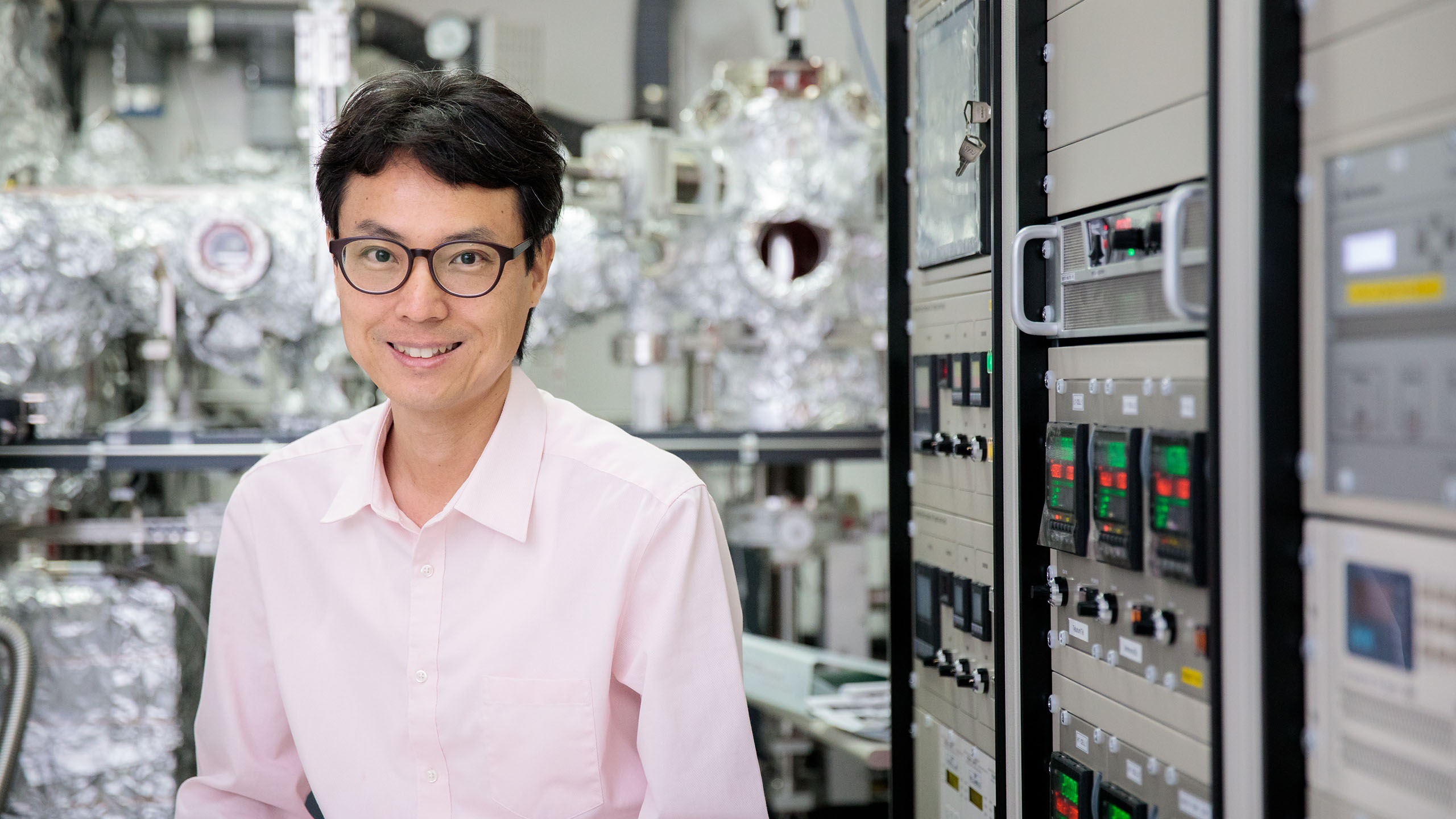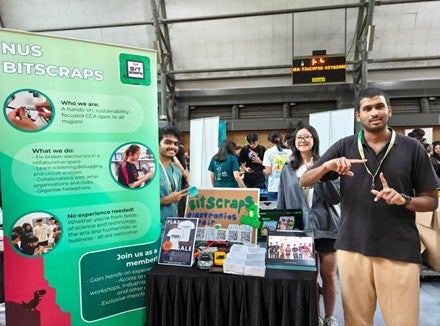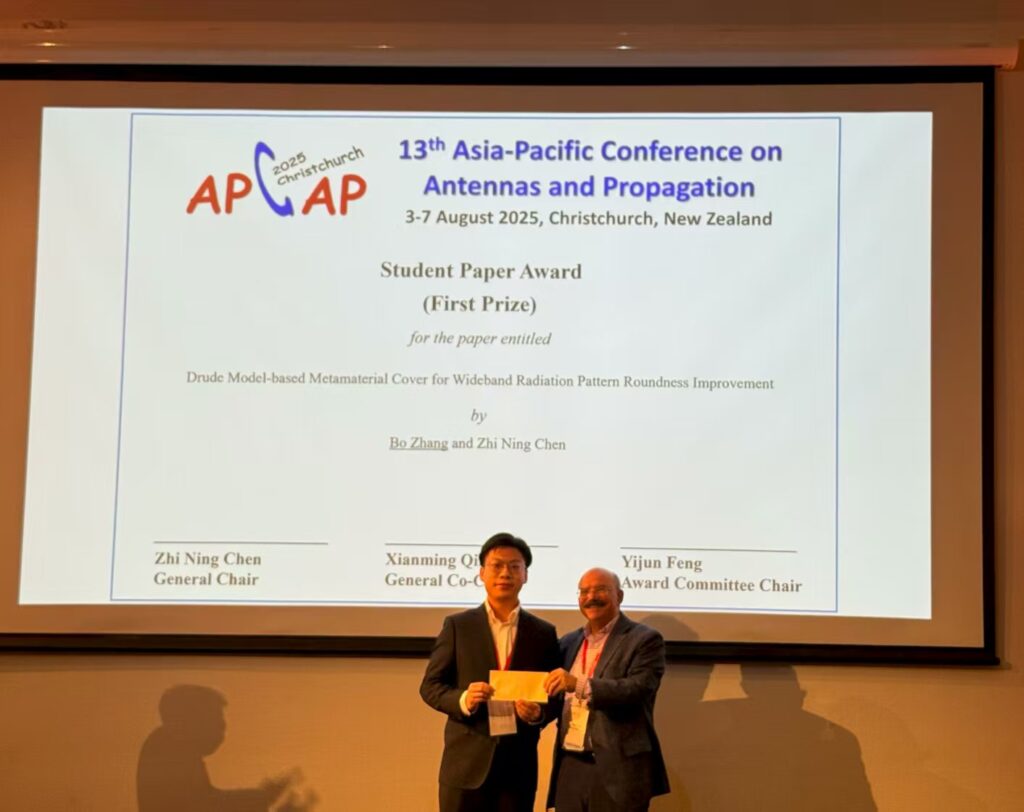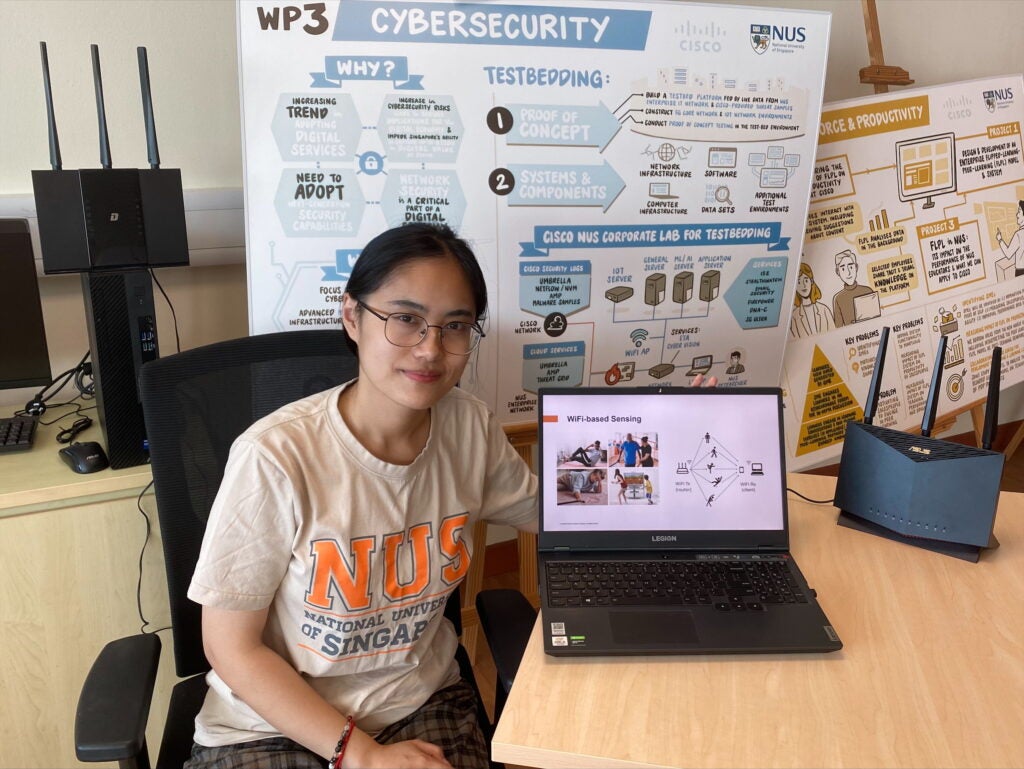
By the late 1990s, personal computers (PCs) had become commonplace in households around the world. The Pentium II had been released by Intel and provided CPU clock speeds of 450 MHz. SDRAM (Synchronous dynamic RAM) was replacing DRAM, with some higher end PCs containing 128Mb of it. When it came to storage, 10 to 16 Gigabytes (GB) of data was available for those who could afford it. For those who could not, the 3.5-inch floppy drive still provided sufficient back up.
Around the same time, a young graduate from Seoul National University had begun working on computer chip and video phone board designs. His interests and talent in the field would soon take him to the United States on a scholarship to study a Master’s degree, and later a PhD under the supervision of Professor James Harris at Stanford University and Professor Stuart Parkin at the IBM Almaden Research Center.
It has been 20 years since his days as a staff engineer in South Korea, and now Associate Professor Yang Hyunsoo, from NUS Electrical and Computer Engineering, feels fortunate to be able to reflect on both the rapid development of computing technologies, and on his own prestigious career.
“Since my days at IBM I have been looking at spintronics. What sets spintronics apart from traditional electronics is the use of the spin of an electron to store information, rather than the electron’s charge or motion. Traditionally this property of electrons has been overlooked in conventional electronics,” explained Assoc Prof Yang. “Now we are beginning to explore the use of electron spin in CPUs and cell phones.”
Electron spin is a quantum mechanical property that is inherent in subatomic particles such as electrons. This property sees the electron exist in either an ‘up’ or ‘down’ state. When the spin state of the electrons in a material are aligned, this will create magnetism, and can be translated to binary information for application purposes.
“While SRAM or SDRAM has continued to evolve over the years, it can be replaced with magnetic memory, which has superior data transfer speeds, and is also non-volatile,” said Assoc Prof Yang. “This means it does not require power to retain stored data. Imagine a system that lets you pick up where you left off even after shutting down or losing power.”
His interests are also heavily invested in the pursuit of THz devices. Today’s computer processors operate at around the 3- to 5-GHz range, which refers to the number of clock cycles per second that the processor completes. It is effectively the speed at which the computer can process information. The higher the frequency, the more calculations the CPU will complete in a second.
“Currently we are talking about 5G networks, and, say, 20 years from now, we may be discussing 8G or 9G. But no matter what it may be called, I expect it to utilize THz frequencies.” — Assoc Prof Yang Hyunsoo, NUS Electrical and Computer Engineering.
Clearly, the difference between 450MHz, which was the standard in the late 90s, and what is available in even an “average” smartphone are worlds apart. A CPU operating at 2.5THz would be 1000 times faster than a flagship smartphone circa 2014.
“Currently we are talking about 5G networks, and, say, 20 years from now, we may be discussing 8G or 9G. But no matter what it may be called, I expect it to utilize THz frequencies. Everything should scale proportionally, and we will see THz devices used in security and medical applications, communications and wireless networks, and of course computer technology,” said Assoc Prof Yang.
For him, this means continuing the search for materials that will enable the processing and generation of THz waves, in particular, the combination of new magnetic materials.
“Combining two new materials together, and observing what occurs at their interface is intriguing. Unravelling the unknown is what excites me the most,” Assoc Prof Yang revealed. “Of course, we like our discoveries to be applied to new technologies, and for that technology to be made available to society. For this, however, any new material must not only be functional, but it must be manufacturable and scalable.”
An eye for a sustainable and ethical future
Assoc Prof Yang may be driven by curiosity and the fundamental pursuit of discovery; however, the importance of his work in what has been dubbed the Fourth Industrial Revolution (Industry 4.0) is not lost on him.
“The push towards smart, artificial intelligence-based technologies, automated machines and connected devices cannot happen without significantly improving computing hardware. This means creating new forms sensors to collect and transmit data, non-volatile RAM and CPUs with faster processing speeds to handle real-time processing, and of course a substantial increase in data storage capacity. The next generation of these technologies will stem from today’s materials research,” he declared.
As the world becomes more connected, people are increasingly reliant on digital technologies. In the span of one generation, the way we live and communicate has changed dramatically, and as the research from Assoc Prof Yang shows, this is unlikely to slow down for the next generation.
It is this caveat that has Assoc Prof Yang cautiously optimistic that society is prepared for the next generation of digital technologies. As he points out, technology always has two faces and society must therefore learn from the past before embracing next-generation technologies.
“I teach a class on engineering ethics, and one of the major issues is pollution from electronic waste, which is often exported from developed countries to developing countries. People are always pursuing the latest technologies — so what will become of our existing and future devices?” he mused. These ethical issues are what motivates Assoc Prof Yang to fulfill his personal goal of nurturing the next generation of researchers to approach their research in a holistic manner.
The awareness of such issues may after all lead to the discovery of further technological breakthroughs, and it is anyone’s guess how much more advanced those new inventions will be compared with the technology of 2019. But one thing that will continue to inspire Assoc Prof Yang is the hope that the semiconductors of tomorrow will be environmentally friendly, reusable, and even biodegradable.





